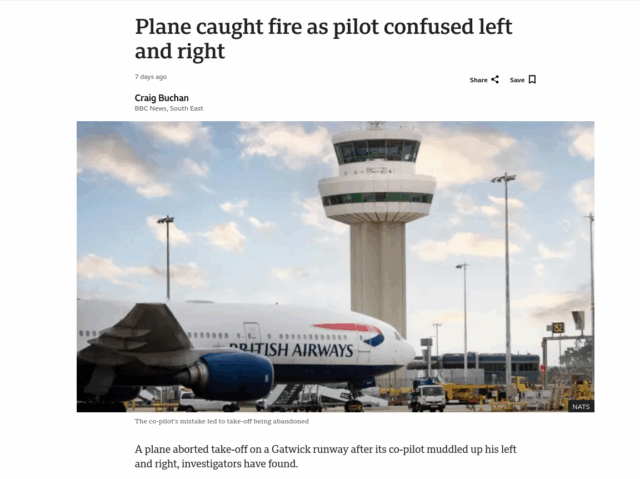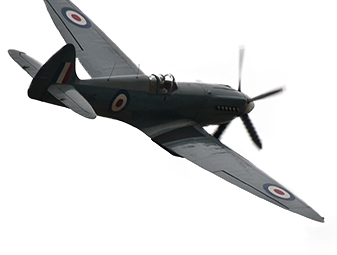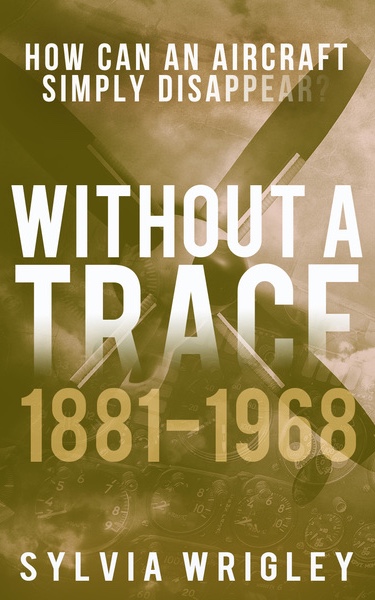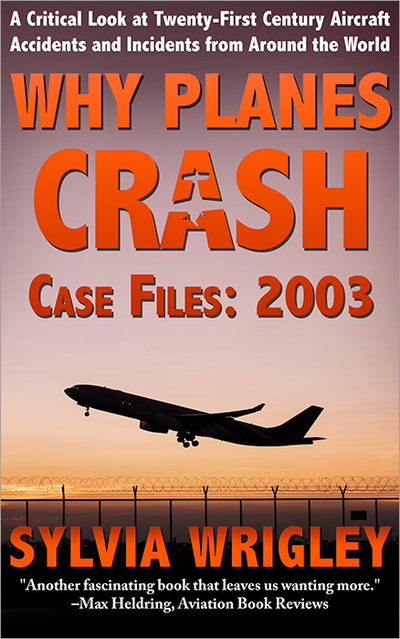Hand on Thrust, Brain on Autopilot
On the 28th of June 2024 a Boeing 777-236, registered in the UK as G-VIIT, rejected a take-off after reaching V1 during the take-off roll on 26L at London Gatwick Airport.
In order to understand what happened that day, we need to understand V-speeds: relative speeds which need to be calculated for every flight.
The key speeds during take-off are V1 and V2.
The operator’s flight crew training manual explains V1 as follows:
…the maximum speed in the takeoff at which the pilot must take the first action…to stop the airplane within the accelerate-stop distance…
The Acceleration Stop Distance Available (ASDA) is the length of the runway suitable for the take-off run and the stopway length. The ASDA is published for each runway and represents the maximum distance available for a rejected take-off. After reaching V1, there is not enough remaining runway to safely stop.
Although it is referred to as the decision speed, V1 represents a crucial threshold: any choice to reject the take off must be made before reaching V1, so that the stopping is already in progress when it reaches V1.
During the take-off run, the Pilot Flying will increase the thrust and then keep their hand on the thrust levers, ready to pull power back in case the take-off needs to be aborted.
The Flight Crew Training Manual continues:
The Pilot Flying should keep one hand on the thrust levers until V1 in order to respond quickly to a rejected takeoff condition. After V1, the Pilot Flying’s hand should be removed from the thrust levers.
The next important V-Speed is VR, which is the rotation speed. When the aircraft reaches VR, the Pilot Flying pitches up slightly to bring the nose wheel up and transition into flight.
So, once V1 is reached, the pilot removes their hand from the thrust levers, as they are now committed to continuing the take off. With the other hand, they prepare for VR, when they need to gently pull back on the controls to bring the nose up.
The V-speeds are calculated for every flight, based on the aircraft weight, the environmental conditions and the runway parameters. Then the flight crew enter that information into the flight management system. The V-speeds are shown on the airspeed indicator. In the Boeing 777 (and many other modern aircraft), the call-out for V1 is automated and called out using a synthetic voice, so that it is triggered at the precise moment when the aircraft’s indicated airspeed reaches V1.

That day, with 13 crew and 334 passengers on board, the aircraft’s take-off weight was 248 tonnes, 20 tonnes below its maximum take-off weight. The weather at Gatwick was good that morning: dry with temperatures of 18°C (64°F) and a headwind of 11 knots. The aircraft’s departure was from intersection A1 of runway 26 left.
For the passenger flight from London, England to Vancouver, Canada, V1 was 160 knots and VR was 161 knots. V2, the minimum speed required to allow the aircraft on one engine to maintain a safe climb, calculated at 165 knots.
The first officer was the Pilot Flying with the captain as Pilot Monitoring. The first officer had 6,156 hours total flying time with 2,700 hours on type. He had just returned to work from his annual leave. His most recent flight had been on the 14th of June, two weeks before.
He was well-rested and feeling fine. Both crew had had an “unremarkable” morning, with no obvious distractions or workload issues.
They taxied to runway 26 left and queued at the intersection of A1. The Boeing 777 entered the runway and lined up, waiting for another aircraft to land in front of them. Once the other aircraft had landed and vacated the runway, they were cleared for take-off. The first officer, as Pilot Flying, increased the engine thrust to start the take-off roll.
They reached 160 knots, the calculated speed for V1, and the automated call-out was made. The Pilot Flying should have removed his left hand from the thrust levers, committing to the take-off. As VR was just one knot more, he needed to be ready to pitch up almost immediately with his right hand.
However, that’s not what happened. Instead, the Pilot Flying pulled back on the thrust levers, reducing the engine power. The captain, in his role as PIlot Monitoring, called out “Rotate!” as they reached VR.
The report says that the first officer “vocalised the error”, which I take to be code for saying “Oh shit”.
He immediately pushed the thrust levers forward again. In those critical seconds, his mind working at a pace slightly faster than the aircraft speeding down the runway, he realised that he didn’t know how badly the power reduction had compromised their take-off performance. He decided that had effectively initiated a rejected take-off at V1 and the safest option now was to commit to that and stop the aircraft.
He pulled the thrust levers back to idle.
The entire sequence took about two seconds.
The captain had no time to consider any of this and had not yet realised that the first officer had reduced the power. He understood that the first officer had decided to reject the take-off and calmly and methodically helped the first officer to achieve that.
The aircraft safely came to a halt on the runway before the last intersection.
A fire broke out on the right-side main wheel brakes, as a result of the heat of the braking action. Airport rescue and firefighting were quickly on the scene and extinguished the fire.
Everyone was evacuated safely.

The BBC headline is dramatic:
Plane caught fire as pilot confused left and right
To be clear: the Boeing 777 did not “catch fire”, the brakes did, which is obviously not optimal but not quite as exciting as the headline implies. Brake fires are a known risk in high-energy rejected take-offs, not a systemic failure and not equivalent to an uncontrolled aircraft fire.
The idea that the pilot pulled the wrong lever because he confused left and right doesn’t really make sense. It implies that the pilot thought he was pulling back on the control column, when in fact he was moving the thrust levers down to reduce the power, which is hard to imagine.
I was tempted to headline this article with *Plane Doesn’t Catch Fire, Pilot Doesn’t Mix Up Left and Right” but that would probably have been petty.
The pilot’s mistake was to reduce thrust, as if rejecting the take-off, instead of removing his hand from the thrust levers. This is a human factors concept known as the “action slip”, when an action is not performed as intended during a routine motor action sequence.
In this case, the pilot’s muscle memory for a rejected take-off procedure momentarily hijacked the take-off sequence, despite the pilot’s conscious intention to continue the flight.
This type of action slip is particularly insidious because it bypasses conscious thought entirely.
Coincidentally, the airline had just completed a review of their standard operating procedures related to action slips, finding that the common features of slips were the absence of cognitive thought and the speed of execution. Literally, the brain is on automatic.
Just four days before the incident, the airline released an operational safety notice: Action slips when moving controls in the flight deck. This recommended that pilots pause to consider the required action, methodically execute it, and confirm its correct execution. They also added a new safety topic section in the pre-flight briefings, including a section on mis-selections.
The airline intentionally avoided listing specific incidents as examples, out of concern that discussing specific mis-selections can unintentionally plant those exact action patterns into pilots’ minds, making them more susceptible to repeating the same mistake.
The AAIB refer to the report of an incident in a Dash 8 in 2018, when the Pilot Flying called for the landing gear to be raised after take-off and the first officer accidentally raised the flaps instead.
In two of the events involving that operator, the pilots suggested that they may have been somehow primed to make the “action slip” – in one case because the commander had been thinking about an earlier mis-selection event by another crew while waiting for the instruction to raise the flaps, and in the other because the pilot monitoring (PM) had just finished training which focussed on avoiding this type of mis-selection shortly before the incident flight.
The AAIB analysis concluded that the V1 call out should have prompted the Pilot Flying in the right hand seat to move his left hand from the lever and be prepared to pull back on the control column with his right.
Instead, he pulled back with this left hand, unintentionally following the sequence for a rejected take off.
There was, the AAIB said, no obvious reason for his having done this. He hadn’t recently changed seat or practised rejected take-offs in the simulator. The first officer also could not explain it and said he was surprised at himself.
The decision to reject the take-off should be made before V1 is reached but in this case, the officer didn’t make a decision. They were travelling at V1 speed, 160 knots, when he first pulled back on the levers. Although he instinctively pushed the levers forward again, after a moment’s conscious thought, he decided that it would be safer to reject the take-off. At the point when he consciously committed to rejecting the take-off by pulling the thrust levers back again, they were travelling at 162 knots: two knots above V1 and one knot above VR. The aircraft’s speed continued to rise by another five knots to 167 knots before beginning to slow.
However, the aircraft was able to stop safely with runway to spare when they came to a complete halt.
The AAIB praised the crew’s Cockpit Resource Management, highlighting that once the captain understood what was happening, he worked with the first officer to safely stop the aircraft.
The first officer acknowledged that in another situation, he might have continued to take off using maximum thrust.
That would have been the better decision. The V-speeds are specifically calculated so that even if one engine fails at V1, there is enough power to continue the take-off and climb safely. The investigators did not analyse the data to consider the alternative outcome, but as both engines were operating normally, it seems likely that at maximum power, the aircraft would have taken off safely.
Having said that, it’s pretty easy to second-guess a pilot’s decision while sitting on the ground and the fact is, the Boeing 777 was stopped safely, with the exception of the burnt right-side tyres.
The AAIB report concludes with a consideration of control selections and mental rehearsal, especially in the context of a take-off roll. Pilots must keep two contradictory sequences in their mind at the same time: they are executing precise actions for take off while being ready to execute the actions to reject the take-off. The report recommends that pilots engage in mental rehearsal: mentally practising normal and emergency procedures to strengthen the correct neural pathways and reduce the risk of action slips during critical phases of flight. Such mental rehearsals are particularly useful, they conclude, after time away from flying, as was the case with the first officer who had returned after a fortnight’s leave.
Preventing action slips is an ongoing challenge for operators and crew. It is good to see this much attention being placed on mental hiccups as opposed to simply dismissing it as a stupid error by a distracted pilot.








Hm. Modern pickup trucks (at least Super Duty Ford trucks) have little gizmos that tell the driver just how much weight they have loaded into the truck.
Seems to me that with a somewhat more sophisticated weight-measuring device along those lines, a modern jetliner could calculate for you things like V1 and Vr. It could even do balance (equal across left/right main gear? What’s the anticipated load on the nose gear for this total weight?) if it wanted to.
Getting wackier, with a good GPS and a database of airports, the aircraft would even know, on its own, not only what airport it is at, but what runway it is lined up upon, in which direction, how long it is, and all the other fun environmental considerations that go into a successful takeoff. (Already done for III-C instrument landings, no?)
Of course, there’s lots of room for some really spectacular failure modes doing that.
Personally I’d like to see implemented something like “The flight crew still does the math, enters in their numbers, and the aircraft can object, “Those are way off my numbers. Check again, please.”” J.
Dumb question: what happens if an aircraft reaches V1 but doesn’t make it to VR? Even if it’s just a kt or two, is it possible to get stuck in between?
V1 is set such that if an engine fails after V1, the aircraft will still be able to take off and climb sufficiently to clear the obstacles past the end of the runway. That means, for the aircraft to reach V1 but not Vr, two engines have to fail. When that happens, the pilot would probably abort the take-off, and hope for the best. (If you’re going to crash, it’s better to not get off the ground in the first place.)
That said, the physics are not black-and-white; an aircraft can rotate and get airborne when it is slower than Vr, but it wouldn’t be able to climb as well (or at all). When that happens, the cause is typically not an engine failure. Sylvia has blogged about a catastrophic take-off from a muddy grass strip at “Pushing Limits: The Fatal Crash of a Newly Qualified Pilot”. I also remember a blog post about a flight (in Eastern Europe?) that couldn’t get airborne properly because of wing ice, but can’t find it right now.
But in general, aircraft don’t struggle to reach Vr, and commercial multi-engine aircraft can reach Vr and take off even if one engine fails: this shows you that it’s highly unlikely that an aircraft would accelerate to V1 and then stop accelerating.
Unless the pilot reduces the thrust, of course.
Sylvia writes, “After reaching V1, there is not enough remaining runway to safely stop.” As this event demonstrated, that’s not strictly true; or rather, it depends what “safely” means. V1 really represents two separate conditions. From the Skybrary:
“Maximum V1” represents the speed beyond which the aircraft can not stop safely. The actual V1 can be lower. So, while V1 is the “decision speed”, a bad decision doesn’t necessarily spell disaster.
Yeah, I agree, “safely” is doing a lot of heavy lifting there. I started to write a bit about buffers and it felt like too much. In this case, they didn’t need the buffers: the runway was dry, the weather was perfect, they had a headwind, and there were no faults with the aircraft.